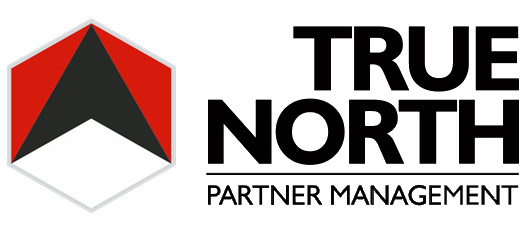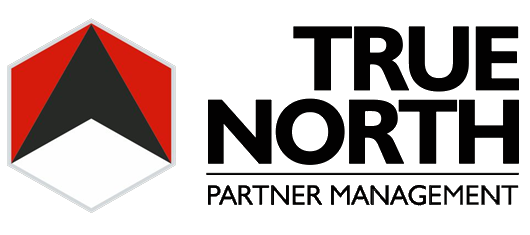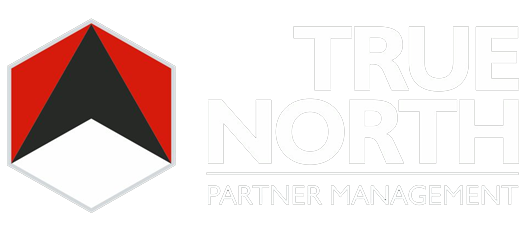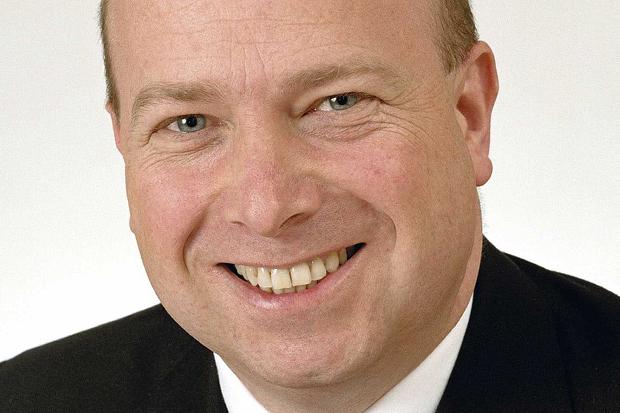The following post originally appeared on Forbes | May 13th, 2014
In a 2011 survey, McKinsey uncovered what they called the globalization penalty: high-performing global companies consistently scored lower than those more locally focused on several dimensions of organizational health. This manifested in challenges surrounding things like establishing a shared vision, encouraging innovation, executing “on the ground,” and building relationships with governments and business partners. And while McKinsey wasn’t focusing on law firms in particular, any international law firms—and certainly global law firms—are exposed to the same pressures and penalties in varying degrees.
Strict professional rules, weaker governance models (in comparison to the corporate world), the credence nature of legal services, and more, hamstring law firm leadership in ways that would bring most corporate CEOs to their knees. A question then arises: How might leadership overcome these and many other challenges that accompany the expansive growth of today’s firms? While there isn’t a single answer to this question, certainly a strong and cohesive culture is one of the more necessary ingredients.
As any leadership knows, much like riding a giraffe, sustaining and managing a strong culture ranges from challenging to farcical; creating a strong culture from scratch approaches another atmosphere of difficulty. As the novelist James Baldwin eloquently said, “No people come into possession of a culture without having paid a heavy price for it.” Baldwin’s claim is true. The very process of developing a culture requires significant time and the tribulatory bathing and filtering of beliefs and values and methods and the such to weed out the weak and ineffective from the strong and effective.
Mr. Baldwin also went on to say, “This price they cannot, of course, assess, but it is revealed in their personalities and their institutions.”
So, to better understand the nature of a strong, cohesive, and effective culture, I looked toward an institution—and the personalities that reside within it—that I’ve seen exude strong and cohesive culture for most of my career: Clifford Chance.
The spawn of a 1987 London-based merger between the (then) 185 year old Coward Chance and the (then) 87 year old Clifford Turner, Clifford Chance, with 3300 attorneys in 36 offices world wide, is a top global firm that was named this year’s International Law Firm of the Year by the International Financial Law Review.
Tangential to today’s piece is that Clifford Chance achieved this size and stature while maintaining a single global profit pool; a feet whose accomplishment is as dependent upon a homogeneous, cohesive, and visceral culture as a newborn cub is to the care of their mother. We are fortunate to have the voice of Matthew Layton, Clifford Chance’s managing partner, to provide insight into the processes and values that helped develop, and continue to support, their culture.
Parnell: Matthew, can you describe Clifford Chance’s culture from, say, a 20,000 ft. view?
Layton: Well, when you talk to clients—which is really important, I think, in terms of what the real culture is like—it’s an incredibly collegiate partnership as a whole. It’s also a very commercially-pragmatic approach [that we take], and that comes from the diversity of our partners and the diverse approach among the teams. Also, one of the constant messages we hear back is that clients enjoy working with us. We’re not intimidating in any way; we’re not arrogant; we roll our sleeves up and like delivering a great commercial service to our clients. That, I think very much—to me anyway—represents the diverse and open commercial culture and collegiality within the firm, because, you know, we’re quite a broad church. (*We had a laugh here…)
Parnell: You mentioned “collegiality,” which can be a bit of a broad term. What does collegiality mean to you?
Layton: The partners and the teams being focused on how to deliver the very best of the firm, across the breadth of the firm, to our clients. To me, it’s all about team work. And people need to leave aside individual agendas—which, I think they do—and focus on what is absolutely the right team to deliver the best results, the best service, and the highest quality service to the client. This means that people are not looking at internal structures or where they may be sitting and prioritizing individual or group agendas over what really matters, which is how the clients get the best service out of the firm.
Parnell: Can you describe some of the broader challenges to ensuring global cultural homogeneity?
Layton: Well, I think it’s easy to say, but ensuring that people have shared values. Also ensuring that you have clarity in strategy, and clarity of priorities in the way we make our decisions and communicate to get buy-in to those decisions as they pertain to our priority objectives, including [things like] which clients we’re looking to develop relationships with. You do need to join up and deliver the strength of the whole firm in a cohesive way, and so, communicating and getting buy-in to those decisions around prioritization is critical.
The other challenge, of course, is making it feel very much like one firm to the client and to everybody that works here. For example, our policy is to have a very open and engaged environment about knowledge and information, and the sharing of expertise and experiences across our global network. This is important. Not just in terms of sharing technical expertise, but also in sharing commercial and cultural insight across the teams—whether they are working in Latin America or in Europe or in Asia, for instance.
Parnell: Compensation-wise, what a challenge—compensation across all of these different countries…. Are you currently lockstep?
Layton: Yes, we are, and this is one of our core strengths and reinforces the culture. We are a global profit pool, and are a lockstep firm. … It is a great motivator in bringing and holding the firm together, and in keeping it focused on agreed priorities. Of course, you have to make sure that you are also communicating those priorities so that people have clarity as to why these priorities are important for us.
Parnell: Agreed. I think that, that, in a nutshell, is one of the major challenges that we are facing here in the US. As client pressures increase, the need for the firms to work synergistically and collaboratively as a single unit becomes more important. Many compensation models are confederated in nature; this is an issue for some, and may be a major issue in the future.
Layton: What you do hear from clients is that the worst experiences they ever have is when they see firms or service providers allow barriers or silos to get in between the delivery of their service. The last thing, as a client, you want to see are any internal barriers actually influencing the delivery of that service. … We are constantly looking at how we can flatten our structures and be aligned in the best possible way to deliver that service to the client; how we motivate and encourage the partners and the lawyers to understand, particularly, the client perspective of the experience, the expectations [the clients] have of working with us, and how that should always be the prime motivating driver behind behavior within the firm.
Parnell: Has Clifford Chance ever considered the Verein structure?
Layton: Have we ever gotten close to implementing a Verein? No. But, what we will always look at, in terms of our overall objective, is whether the structure we have actually offers us the best opportunity to realize the ambitions of the firm. Whenever we’ve looked at those questions, we’ve always come back to the belief that the global profit pool is the route to go. … The Verein, to us, [imposes] barriers and conflicts within the structure. That isn’t to say that it does not offer some additional options of flexibility, but, we haven’t felt the need to move away from that core principal in order to achieve what we have achieved.
If you look at our global reach, and how we have developed that over the last 5 or 6 years—we successfully integrated two smaller firms into our structure when we moved into the Australian market, and, elsewhere, where we opened new offices, we opened those from start-up operations, ourselves—we have always found ways and structures to do that effectively and in a way that is aligned with our global profit pool for the firm.
[While] I hate to say that we’d never move away from it, [the one-firm model] has proven to be the right move for our firm and our culture.
Parnell: It strikes me as a timing issue. Clifford Chance has been pressing down a global expansion route for a long time. My assumption is that this has afforded you the ability to grow more organically. Some of the firms that are deploying the Verein model perhaps haven’t been pushing down this track as long.
Layton: I sort of agree with that. I think part of the success that we’ve enjoyed has been built on the principal of whatever we are doing, in terms of geographical reach and expansion, is a long term investment; we are not looking for a quick return on those. We have been in Singapore and Hong Kong for over thirty years and we have been in the Middle East for almost 40 years. Some of these markets … people are only now going into for the first time, and are looking for ways to develop their practices while we’ve been investing in our capabilities [in], and building our understanding of, the local environment for decades.
Parnell: This has been a roller coaster of a market over the past 5 or 6 years. How would you say that Clifford Chance’s culture has helped you, as a firm, press along and continue to expand and grow and prosper through this?
Layton: In terms of that roller coaster, I think because we’re a very open partnership, [especially] in terms of the way that we share the vision and values of the firm, It has enabled us to continue to appreciate the benefits of those long term investments. In the down turn from the global financial crisis, there were parts of our business which were hit hard because of their focus on, particularly, some of the big financial institutions. But if you look back, the strength of the relationships and a long term commitment to those clients has also placed us as the firm that they turned to [in order] to address some of the challenges they faced in the market.
Parnell: My assumption is that because of Clifford Chance’s team-orientation, your management is able to make decisions without fear of recourse. Because of the strength of your culture, management is free to make these decisions knowing—at least within reason—that they are going to be accepted and that the firm is going to mobilize behind them.
Layton: Yes, I think that is largely true. You have to get the communication right. That’s very, very important. And, in the communication, you need to be bringing it back to the benefits that our clients are going to see and share as a result of any changes or refocusing.
It is also important that the partners see those upsides being shared across the partnership, not just in financial terms, but also in our market positioning, the presentation of our business to the markets, and our reputation within those markets. The benefit, I think, is that [because] the markets are changing at a very rapid pace, this enables us to be at the forefront of meeting those changes head on.
Also, going back to that energy and entrepreneurialism within the partnership, which has been the historic root of our success over the last few decades, I think that is also something that is recognized and embraced. It’s not without challenges; any change is surrounded by challenges. But the sense of open communication and a partnership that listens and is willing to have open debate are also an important part of the culture.
What you can’t do is just have a top-down approach within such a broad partnership. The global profit pool culture—in my view, anyway—works when the leadership of the firm spends the time communicating and listening and reinforcing the rationale of decisions to the partnership, and promoting the behaviors that support that culture. That, then, means that you don’t need to gain consensus on each and every decision. That, again, is something that I think is inherent and well embedded within the culture of Clifford Chance.
Like herding cats: (idiom) informal; used to refer to a difficult or impossible task, typically an attempt to organize a group of people.
Managing a law firm and the idiomatic saying are synonymous. And by now, in the legal world, anyway, their linkage is cliché. But for all of the tongue in cheek in their utterance, truer words have never been spoken. Thegross majority of the business community, and even much of the legal community, isn’t aware of the exquisitely unique challenges to managing a law firm. “Ownership” of the firm’s “product” can be, and often is, a tenuous and difficult-to-assess matter. As past and current markets show, ownership is usually commanded by the individual partner rather than the firm, which not only immunizes many attorneys of any firm-issued shackles, but also increases their lateral marketability—a double tap to organizational stability. (Pardon the double entendre)
If finances dip too much and for too long, or major decisions are made that may upset a sizable group of the partnership, partners can and will leave, weakening the firm and potentially collapsing it. This leaves leadership in a precarious position: supermajority consensus—both formal and informal—is necessary on many, if not most, decisions. Exacerbating this dilemma is the ever-sprawling footprints of even the smaller major law firms. Consensus in one or two or even five offices is one thing, consensus across the globe is a different animal altogether. It starts not with votes, but with the grass roots of the firm’s culture.



